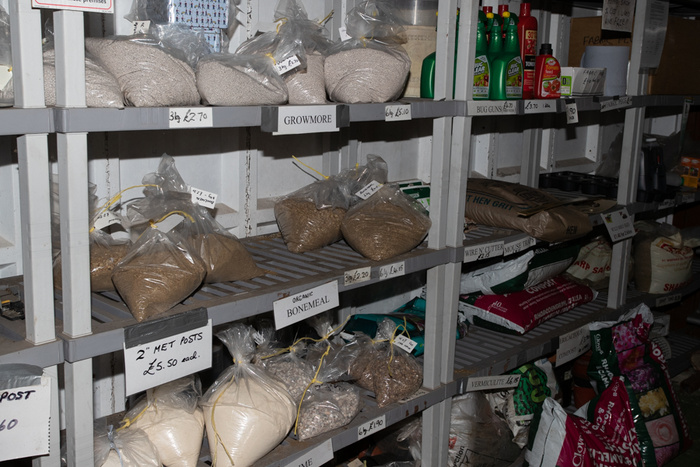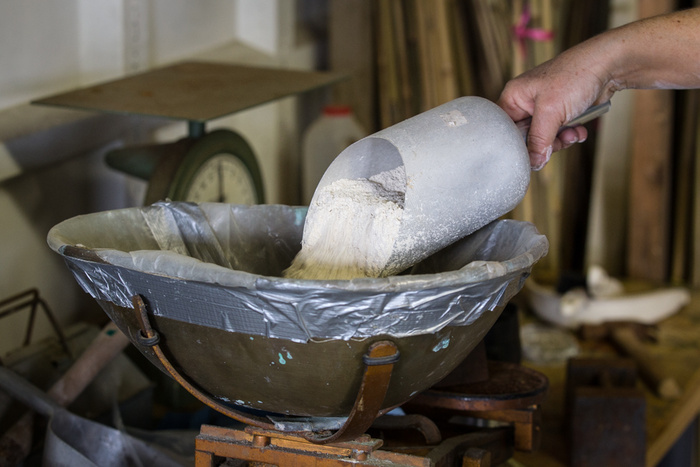Fertilisers
04th June 2020
In: Features
Fertilisers

Over the last few weeks, have been asked by various plot holders about fertilisers. I have diligently given everyone my best response, whilst promising to post an article on the website. Invariably I am not adequately knowledgable to be able to detail all the differences as to why one product should be used in preference to another, and at this point duly point the individuals in the direction of those on site with far superior expertise.
I have now drafted two or three different potential posts, but canned them all as they were far too long and no one really wants to read pages of blurb to ensure their tomatoes or peppers are fit and healthy.
It then dawned on me to search the Royal Horticultural Website which is an encyclopaedia of information, and true to form if you pop Fertilisers into the search button it provides a concise description and the differences between organic and inorganic products.

Organic Fertilisers are derived from animal or plant sources and tend to be slower acting, as large organic molecules have to be broken down by soil organisms before the nutrients within them are released for plant use. Examples of organic fertilisers include: seaweed, hoof & horn, dried blood, fish blood & bone, bone meal, poultry manure pellets and liquid comfrey or nettle feeds.
Inorganic Fertilisers on the other hand are synthetic, artificial forms of plant nutrients or naturally occurring mined minerals. Inorganic fertilisers are usually more concentrated and faster acting than organic fertilisers. Examples of inorganic fertilisers include: Growmore, Miracle-Gro, Phostrogen, Sulphate of Ammonia, Sulphate of Potash, and Superphosphate and Tomorite.
Most plant fertilisers are based on the three major plant nutrients:
Nitrogen (N): For green leafy growth
Phosphorus (P): For healthy root and shoot growth
Potassium (K): For flowering, fruiting and general hardiness
All fertilisers should quote their NPK ratio on the product packaging.
The trading hut stocks and supplies a range of organic and inorganic fertilisers, including Growmore, Fish Blood and Bone, Bonemeal, potash, lime, sulphate of ammonia, tomorite, phostrogen, chicken manure pellets and Maxicrop (Liquid seaweed extract). Information about all of these products can be found by searching the web, or the Royal Horticultural Society, or for a less than 100% view please continue to ask at the trading hut.
Don’t forget it is quite easy to produce your own fertiliser. Comfrey which can be grown on the plot rotted down and the concentrated liquid produce diluted with water is excellent for application on flowering growth to enhance fruiting as it is potash rich, and a wormery is another source of liquid fertiliser, although more of a general feed, and should be watered down 10 parts to 1. Nettles left to rot down in water provides another natural source of nutrients, high in nitrogen and approx 1 kilo to 10 litres of water and diluted before application by a tenth.

Over the last few weeks, have been asked by various plot holders about fertilisers. I have diligently given everyone my best response, whilst promising to post an article on the website. Invariably I am not adequately knowledgable to be able to detail all the differences as to why one product should be used in preference to another, and at this point duly point the individuals in the direction of those on site with far superior expertise.
I have now drafted two or three different potential posts, but canned them all as they were far too long and no one really wants to read pages of blurb to ensure their tomatoes or peppers are fit and healthy.
It then dawned on me to search the Royal Horticultural Website which is an encyclopaedia of information, and true to form if you pop Fertilisers into the search button it provides a concise description and the differences between organic and inorganic products.

Organic Fertilisers are derived from animal or plant sources and tend to be slower acting, as large organic molecules have to be broken down by soil organisms before the nutrients within them are released for plant use. Examples of organic fertilisers include: seaweed, hoof & horn, dried blood, fish blood & bone, bone meal, poultry manure pellets and liquid comfrey or nettle feeds.
Inorganic Fertilisers on the other hand are synthetic, artificial forms of plant nutrients or naturally occurring mined minerals. Inorganic fertilisers are usually more concentrated and faster acting than organic fertilisers. Examples of inorganic fertilisers include: Growmore, Miracle-Gro, Phostrogen, Sulphate of Ammonia, Sulphate of Potash, and Superphosphate and Tomorite.
Most plant fertilisers are based on the three major plant nutrients:
Nitrogen (N): For green leafy growth
Phosphorus (P): For healthy root and shoot growth
Potassium (K): For flowering, fruiting and general hardiness
All fertilisers should quote their NPK ratio on the product packaging.
The trading hut stocks and supplies a range of organic and inorganic fertilisers, including Growmore, Fish Blood and Bone, Bonemeal, potash, lime, sulphate of ammonia, tomorite, phostrogen, chicken manure pellets and Maxicrop (Liquid seaweed extract). Information about all of these products can be found by searching the web, or the Royal Horticultural Society, or for a less than 100% view please continue to ask at the trading hut.
Don’t forget it is quite easy to produce your own fertiliser. Comfrey which can be grown on the plot rotted down and the concentrated liquid produce diluted with water is excellent for application on flowering growth to enhance fruiting as it is potash rich, and a wormery is another source of liquid fertiliser, although more of a general feed, and should be watered down 10 parts to 1. Nettles left to rot down in water provides another natural source of nutrients, high in nitrogen and approx 1 kilo to 10 litres of water and diluted before application by a tenth.